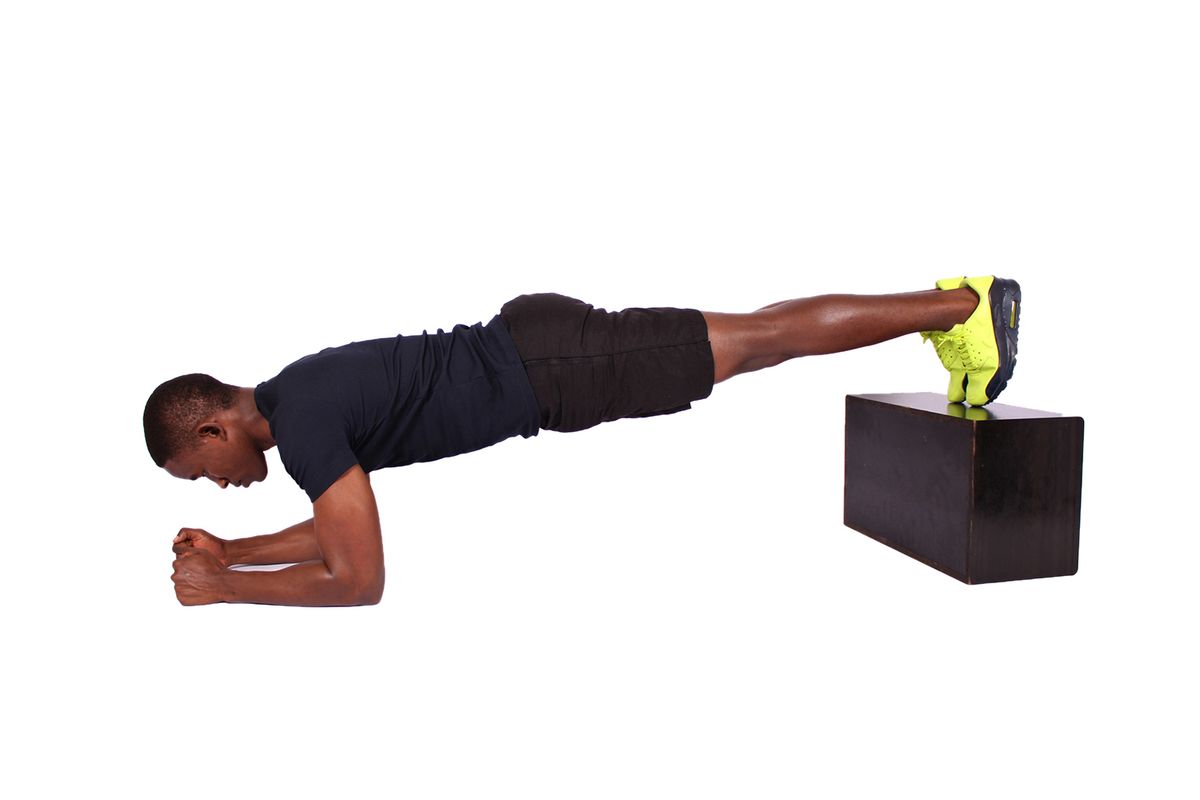
Bouncing Back: Tips for Effective Recovery After Gym Sessions
Soothe Those Muscles: Post-Workout Recovery Essentials

Cool Down Routines to Ease Tension
After a solid workout, your muscles are fired up - but not in the chill, 'let's relax' kind of way. They're all tensed up, and that's where a proper cool down comes into play. Slowing down gradually is the name of the game; it's about giving your body the heads-up that it's time to shift from beast mode to zen mode.
Cooling down isn't just about going through the motions. It's a crucial step to prevent stiffness and soreness, making sure you're ready to hit the gym again without feeling like a walking cinder block. Here's a quick rundown of what a chill cool down might look like:
- Start with light cardio: a slow jog or a leisurely cycle for about 5 minutes.
- Ease into dynamic stretches that target the muscles you've worked.
- Finish with deep breathing exercises to calm your heart rate and clear your mind.
Remember, the goal is to lower your body temperature and bring your heart rate down gently. This isn't the time to push your limits - it's the time to pamper your muscles and thank them for their hard work.
Stretching: The Key to Flexibility and Repair
After you've powered through a tough workout, your muscles are in desperate need of some TLC. That's where stretching comes into play. It's not just about bending and twisting; it's a crucial step to ensure your muscles heal properly and maintain their flexibility. Stretching helps to reduce muscle soreness and improve your range of motion, making it a non-negotiable part of your recovery routine.
- Start with gentle dynamic stretches to warm up the muscles.
- Progress to static stretches, holding each for at least 30 seconds.
- Focus on major muscle groups used during your workout.
Remember, stretching shouldn't be painful. It's about finding that sweet spot where you feel a gentle pull and relaxation. If it hurts, you've gone too far.
Incorporating a regular stretching routine post-workout not only aids in recovery but also prepares your body for the next challenge. So take those extra minutes to stretch out—it's worth it!
The Magic of Muscle Rollers
Muscle rollers, or foam rollers, have become a staple in the gym bag of fitness enthusiasts. They're not just for show; these simple tools can work wonders on sore, tight muscles. Rolling out after a workout can significantly reduce muscle tension and may even speed up recovery time.
Foam rolling targets the fascia, the connective tissue surrounding muscles, helping to break up knots and improve blood flow. It's like giving yourself a deep tissue massage, without the spa prices. Here's a quick guide on how to use them effectively:
-
Choose the right roller: The density of the roller affects the pressure. Beginners should start with a softer foam, while seasoned gym-goers might opt for a firmer option.
-
Roll slowly: Move over the roller at a slow, steady pace to allow your muscles to adapt and relax.
-
Focus on sore areas: Spend extra time on any spots that feel particularly tight or sore, but avoid rolling directly over joints or bones.
Remember, while muscle rollers can be incredibly beneficial, they're not a cure-all. Listen to your body and combine rolling with other recovery methods for the best results.
Refuel and Recharge: Nutrition for Muscle Recovery

Protein Power: What to Eat Post-Workout
After you've crushed your workout, it's time to give your muscles the fuel they need to repair and grow. Protein is the building block of muscle recovery, and getting enough of it post-exercise is crucial. But not all protein is created equal. Aim for high-quality sources that pack a punch without a lot of extra fat or calories.
Here's a quick hit-list of protein-packed foods to consider:
- Grilled chicken or turkey breast
- Cottage cheese or Greek yogurt
- Tofu or tempeh for plant-based power
- A scoop of whey or plant-based protein powder
Timing is everything when it comes to protein intake. Try to get your protein hit within 45 minutes after your workout to take advantage of the anabolic window, when your muscles are primed to absorb nutrients.
Remember, while protein is key, it's not the only player in the recovery game. Balance your meals with carbs and fats for a well-rounded recovery meal that supports all aspects of your health.
Hydration Hacks for Optimal Recovery
Staying hydrated isn't just about chugging water after your workout—there's a bit more nuance to it. Timing is everything when it comes to rehydration. Your body needs fluids to help process the nutrients you're taking in and to kickstart the muscle repair process. But don't just drown yourself in H2O right after you drop those weights.
- Start by sipping water throughout your workout to stay ahead of the game.
- Post-exercise, aim for 16-24 ounces of fluid for every pound lost during the session.
- Don't forget electrolytes! They're key in maintaining balance within your body's cells.
Remember, the goal is to replenish what you've lost, not to overdo it. Too much water too fast can lead to discomfort or even hyponatremia.
And hey, water isn't the only player here. Consider coconut water or sports drinks with added electrolytes to mix things up. Just watch out for those with high sugar content—you don't want to undo all that hard work with empty calories.
Timing Your Meals for Maximum Benefit
Ever wondered why some folks seem to bounce back faster than a rubber ball after a workout? Well, timing is everything when it comes to refueling your body. Eating the right foods at the right time can seriously speed up your recovery game.
- Immediately post-workout (0-2 hours): Your muscles are screaming for nutrients. This is the golden window for a protein-rich snack to kickstart repair.
- 2-3 hours after exercise: Time for a balanced meal. Think carbs, protein, and fats to replenish energy stores and build those gains.
Remember, your body's recovery clock is ticking from the moment you drop those weights. Don't let your hard work go to waste by delaying your refuel session.
It's not just about scarfing down a protein bar on the go. Planning your meals can make a huge difference in how effectively your muscles repair and grow. So, get your timing down, and you'll be ready to hit the gym again with all cylinders firing!
Catch Those Z's: The Role of Sleep in Muscle Recovery

Creating a Sleep Sanctuary for Quality Rest
Transforming your bedroom into a sleep sanctuary is a game-changer for muscle recovery. The environment where you sleep can significantly affect the quality of your rest, and in turn, how well your muscles repair overnight. Start with the basics: a comfortable mattress and pillows that support your body in all the right places.
To enhance your sleep sanctuary, consider the following:
- Dim the lights or use blackout curtains to signal to your body that it's time for sleep.
- Keep the room at a cool, comfortable temperature.
- Invest in quiet or noise-cancelling devices if external sounds are an issue.
- Ensure your bedding is conducive to rest, with breathable fabrics.
Remember, a restful night's sleep is not a luxury, it's a necessity for those looking to optimize their recovery. Creating a space that's dedicated to sleep will help cue your body to wind down and regenerate.
Lastly, minimize electronic distractions. The blue light from screens can disrupt your circadian rhythm, making it harder to fall asleep. Try reading a book or meditating before bed instead. By prioritizing your sleep environment, you're setting the stage for a more effective recovery and better performance in the gym.
Understanding Sleep Cycles and Muscle Repair
Ever wondered why you feel like a superhero after a good night's sleep? That's because sleep is when your body goes into overdrive repairing those hard-worked muscles. The deeper stages of sleep are prime time for muscle repair, with growth hormone doing its thing to rebuild and strengthen your fibers.
But it's not just about clocking in hours. The quality of sleep matters too. You want to aim for multiple cycles of sleep, each consisting of stages that range from light dozing to deep REM sleep. Here's a quick rundown of what a good sleep cycle looks like:
- Stage 1: Light sleep, the gateway to dreamland
- Stage 2: Slightly deeper sleep, your body starts to chill out
- Stage 3: Deep sleep, where the magic happens for muscle repair
- REM: Rapid Eye Movement, where your brain gets its workout
Remember, consistency is key. Try to keep a regular sleep schedule to train your body to hit those cycles effectively.
So, if you're skimping on sleep, you're skimping on gains. Make sure to prioritize those Z's to maximize muscle recovery and get ready to crush it at the gym the next day.
Naps: A Secret Weapon for Recovery?
Ever thought of napping as a tool in your fitness arsenal? Well, it turns out that a quick snooze might be just what your muscles need. Naps can significantly enhance muscle recovery, giving your body a chance to repair itself after a strenuous workout. But not all naps are created equal.
Timing is everything when it comes to napping for recovery. A short nap of 20-30 minutes can boost alertness and improve performance without leaving you feeling groggy. Here's a quick guide to the perfect post-workout nap:
- Keep it short: Aim for 20-30 minutes to avoid sleep inertia.
- Early afternoon is best: Align your nap with your circadian rhythm.
- Create a restful environment: Find a quiet, dark place to rest.
Remember, the goal is to complement your recovery, not replace nighttime sleep. Think of naps as a quick reset for your body and mind.
So next time you're feeling wiped out after hitting the gym, consider setting aside some time for a power nap. It might just be the secret ingredient to your recovery routine, helping you bounce back faster and stronger.
Active Recovery: Keep Moving on Your Rest Days

Low-Impact Activities That Promote Healing
After pushing your limits in the gym, it's crucial to give your body a chance to recover without coming to a full stop. Low-impact activities are your best buddies on rest days, helping to maintain blood flow and promote healing without overtaxing your weary muscles. Think of them as a gentle nudge to your body's repair mechanisms.
Walking, swimming, and cycling at a leisurely pace are prime examples of low-impact exercises that keep you moving and aid in recovery. They're easy on the joints and can be quite meditative, too. Here's a quick list of activities to consider:
- Yoga or Pilates
- Tai Chi
- Aquatic exercises
- Light resistance training with bands
Remember, the goal isn't to set personal records but to stay active and facilitate muscle repair. Listen to your body and adjust the intensity accordingly. If you're feeling particularly sore or fatigued, it's okay to dial it back or even take a complete rest day.
The Benefits of Cross-Training
Cross-training isn't just a buzzword—it's a strategic approach to fitness that can significantly enhance your recovery process. By engaging in different types of exercises, you're giving overworked muscles a chance to rest while still staying active. It's the perfect balance between rest and motion.
- Variety: Keeps workouts fresh and engaging.
- Injury Prevention: Reduces the risk of overuse injuries.
- Performance: Improves overall fitness by working different muscle groups.
- Flexibility: Allows for adaptation based on personal needs or injuries.
Remember, cross-training is about creating a well-rounded workout routine that supports recovery while building strength and endurance across the board. It's not about pushing hard every day but finding the right mix of activities that keep you moving and motivated without overtaxing your body.
Listening to Your Body: When to Take It Easy
It's crucial to tune into your body's signals to prevent overtraining and injuries. Listening to your body means recognizing when fatigue or discomfort is more than just the usual post-workout soreness. It's about understanding the difference between pushing your limits and pushing into the danger zone.
Rest is not a dirty word in the fitness world—it's a vital component of growth and recovery. Here's a quick checklist to help you decide when to dial it back:
- Persistent aches in joints or muscles
- Unusual or prolonged fatigue
- Decreased performance in workouts
- Mood swings or irritability
- Disturbed sleep patterns
Remember, taking a step back can actually propel you two steps forward in your fitness journey. It's better to take a day off than to face weeks out due to injury.
Mind Over Muscle: Mental Strategies for Recovery

The Power of Mindfulness and Relaxation Techniques
In the hustle of hitting personal bests and crushing workouts, it's easy to overlook the quieter side of recovery. Mindfulness and relaxation aren't just buzzwords; they're crucial tools for resetting your mental state and enhancing physical recovery. By focusing on the present moment and calming the mind, you can significantly reduce stress levels, which in turn can lower inflammation and promote healing.
Breathing exercises, guided imagery, and meditation can all be part of your mindfulness practice. Here's a simple routine to get you started:
- Find a quiet space where you won't be disturbed.
- Sit or lie down in a comfortable position.
- Close your eyes and take deep, slow breaths.
- Visualize your muscles relaxing with each exhale.
- If your mind wanders, gently bring your focus back to your breath.
Remember, even a few minutes of mindfulness can have a profound impact on your recovery. It's not about the length of time you spend; it's about the quality of your practice.
Visualizing Recovery and Performance Gains
Ever tried picturing yourself acing that next workout or feeling the relief of sore muscles fading away? Visualization can be a powerful tool in your recovery arsenal. By mentally rehearsing your recovery, you're priming your body to follow suit. It's like a mental blueprint for muscle repair and performance enhancement.
- Imagine the healing process as vividly as possible.
- Focus on the sensation of each muscle relaxing and recovering.
- Envision your next workout with stronger, more resilient muscles.
Remember, the mind-body connection is real. The more you can 'see' your muscles healing, the better they'll respond. It's not just woo-woo; it's science-backed woo-woo.
So, take a moment post-workout to close your eyes and paint a mental picture of your body getting stronger. It's a simple, yet effective way to boost your recovery and performance.
Stress Management: Its Impact on Recovery Times
Ever noticed how a stressful day can make your muscles feel like they're tied in knots? That's because stress doesn't just mess with your mind; it has a physical impact too. Managing stress is crucial for faster recovery after hitting the gym hard.
- Practice deep breathing exercises
- Engage in activities that relax you, like reading or taking a walk
- Set aside time for hobbies that take your mind off stressors
Remember, your mental state is a powerful player in the recovery game. A calm mind promotes a healthy body.
So, don't underestimate the power of chilling out. It's not just about feeling good—reducing stress can actually speed up your recovery time, getting you back to your workouts with more vigor and less pain.


